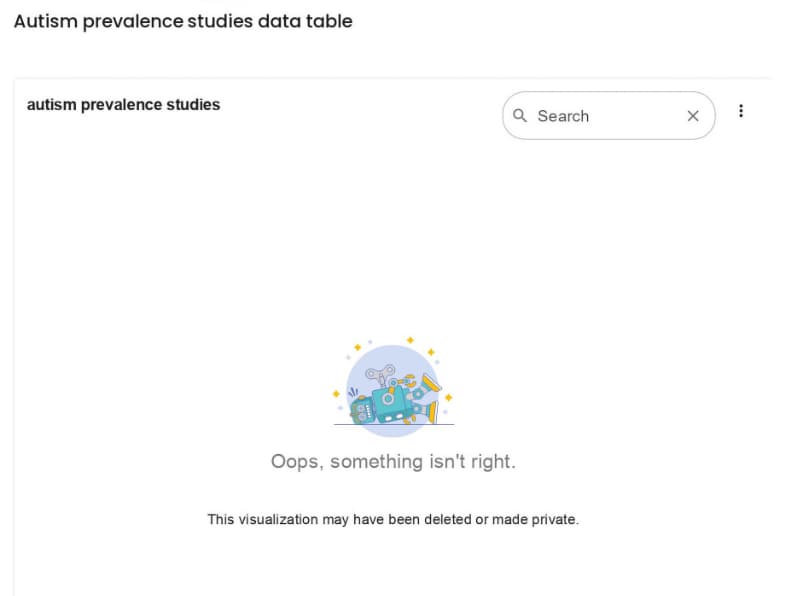
It was interesting to note over the last few days the noise being made by the secretary of the Department of Health and Human Services, Robert F. Kennedy Jr., that he’s going to put to the test every crackpot notion he’s ever had or heard of to bring an end to the “epidemic” of autism.
His thesis is that the incidence of autism, a neurological development disorder, has been rising a great deal in recent years, which he attributes to things of which he has long been suspicious, such as vaccinations. There is every reason to think that some — most, perhaps all — of the increase is due to the broadening of conditions that are now diagnosed as autism, which is said to fall along a range. That range has been itself expanding, so it could be that the increase is due to that alone, though part of it probably comes from closer examination of children’s behavior.
For example, people who exhibit what is known as “Aspberger’s syndrome” have only since 2013 been categorized as autistic. Such persons include Elon Musk.
While some vaccinations, most notably the mmRNA (modified messenger RNA) ones trotted out in a failed attempt to prevent SARS-CoV-2 infection, certainly deserve far closer examination than they have received, there’s no evidence suggesting that any vaccine causes autism.
But let’s for discussion’s sake allow that Kennedy (whose lone qualification for the job is his having made an endorsement deal with Donald Trump during last year’s campaign so there could be a unified kook front in support of Trump) may be right about the prevalence of autism having risen. It would be easier to look at the numbers, except that they have disappeared. This is a sudden and common phenomenon peculiar to Trump’s government: the disappearance of studies, documents, and statistics the administration doesn’t like. Documentation in keeping with the Trump-Kennedy narrative remains. But the numbers don’t tell us anything when we know that until recently the question wasn’t even asked.
If there has been an increase in autism as alleged, we might ask if there has been a corresponding increase in vaccinations? Well, no, there hasn’t. But there has been an increase in something alarming: our use of plastic of various varieties. The numbers are terrifying.
I’d been vaguely familiar with this but then a few weeks ago I saw a report that said that a single small bottle of water will put 195,000 particles of nanoplastic into your body. Many of us — me included — have consumed a lot of bottled water in recent years. Even a scratch-the-surface examination of the literature is enough to mortify you, leaving even the layman to wonder how many of our ills are attributable to plastic particles being found in literally everything we consume.
Those tiny bits of plastic are now found in every organ of our bodies.
“In recent years, microplastics have been documented in all parts of the human lung, in maternal and fetal placental tissues, in human breast milk and in human blood,” noted ScienceNews two years ago. Yes, we’re filling babies with bits of plastic before they’re born.
A survey of studies, published at about the same time, found that tiny plastic particles in our systems do not go unnoticed by our bodies. “These effects consist of oxidative stress, DNA damage, organ dysfunction, metabolic disorder, immune response, neurotoxicity, as well as reproductive and developmental toxicity [emphasis mine]. In addition, the epidemiological evidence suggests that a variety of chronic diseases may be related to microplastics exposure.”
Reported Smithsonian magazine two months ago, “The amount of microplastics in the human brain appears to be increasing over time: Concentrations rose by roughly 50 percent between 2016 and 2024, according to a new study.” A typical human brain — yours, mine — now has an amount of plastic in it sufficient to fashion a plastic picnic spoon! There are higher quantities in people suffering from dementia, and the popular polyethylene plastic appears to be in the highest concentration, in the brain, anyway.
Gee. A substance that has a correlation to lost brain function is also passed from mother to unborn child. It is also found in things like disposable diapers — and just about everything else. “Environmental concentrations of anthropogenic microplastic and nanoplastic (MNP), polymer-based particulates ranging from 500µm in diameter down to 1nm, have increased exponentially over the past half century,” the study’s report begins. If you’re looking for the cause of a condition that has increased correspondingly, that might be a place to look, don’t you think? Maybe even before you latch on to some goofy boogieman notion that’s entirely devoid of supporting evidence?

An appraisal done four years ago ought to alarm us all. Here’s something from the section on how plastic fragments get into the food chain: “Several studies have shown that micro- and nanoplastics enter into the human food chain in various ways: Animals consuming them in their natural environment; contamination during the food production processes; and/or through leaching from plastic packaging of the food and drinks. To date, micro- and nanoplastic fragments have been detected in honey, beer, salt, sugar, fish, shrimps and bivalves. Experimental sampling . . . performed on tap, bottled and spring waters showed that microplastics are present in all these water sources. Tap water from 159 global sources was tested and 81% were found to contain microplastic particles measuring less than 5 mm. Tests were conducted on 259 individual bottles of water from 11 different brands and 27 different batches, and the results demonstrated that 93% contained microplastic particles.” That’s not a comprehensive list. It merely shows that every place researchers have looked they have found microplastics.
And you don’t have to eat it to get plastic in your body. “There are three key routes for microplastics and nanoplastics to end up in the human body: Inhalation, ingestion and skin contact.” Unbroken skin isn’t very efficient at absorbing plastic bits, but your month and lungs are aces at bringing in into your system.
Researchers have found that where there is, for instance, inflammatory bowel disease there is often a higher concentration of plastic bits. Here’s another tidbit, from a year ago: “Having microplastics and nanoplastics lodged into the fatty plaque lining arteries may raise a person’s risk of stroke, heart attack, or death by nearly five-fold, a new study suggests.”
If you’re a man of a certain age, this will interest you: “[A]nalysis revealed the presence of microplastics, including polyamide, polyethylene terephthalate, and polyvinyl chloride, in both para-tumor and tumor tissues of human prostate. However, polystyrene was exclusively detected in tumor tissues.” If that doesn’t get your attention, this will: “Research led by the University of New Mexico looked at testicular tissue taken from both dogs and humans, with 47 canine and 23 human testes being studied in total. The researchers found microplastics in every sample investigated, with an abundance almost three times higher in humans than in dogs.”
And here’s a non-soothing headline: “First evidence of microplastics in human ovarian follicular fluid: An emerging threat to female fertility.” That’s from two months ago.
It goes on and on, with every organ or system examined revealing plastic dust or shards or both. The stuff is as ubiquitous inside the body as it is in the outside world. It is as scary as all get out. You could spend every waking moment reading the literature already published on the subject and you would not have made it through the list by year’s end. None of the news is good.
But we began by looking at the issue of autism and the utter lack of evidence by which Robert F. Kennedy Jr., the secretary of Health and Human Services, thinks with no evidence that it is caused by vaccines and is going to piddle away federal money seeking to prove that he is right. (He is a lawyer by trade and a recovering drug addict by disposition, not skilled in any scientific pursuit.)
Perhaps if actually seeking the cause of the problem were his goal, rather than selecting the villain and looking for the crime (which I am admittedly doing here to some extent, but at least it’s not from thin air), he would examine the evidence, such as this, which is from the upcoming June 2025 edition of Toxicology Reports:
“Key studies show that plastic particles can traverse the maternal-fetal interface, potentially exposing developing fetuses to various harmful chemicals present in plastics, such as endocrine disruptors and persistent organic pollutants. Once in contact with the fetoplacental unit, these particles may trigger inflammatory responses, oxidative stress, and even epigenetic modifications. . . . Such disruptions can increase the risk of developmental and reproductive disorders in the fetus, suggesting that exposure to plastic particles may carry long-term health implications. Further studies highlight the particular vulnerability of the fetoplacental unit to plastic particles.”
Then we have this from last August: “Do Plastics Cause Autism? Here's What The Latest Evidence Shows.” As is typical in scientific research, a correlation was found, but there’s considerable distance between correlation and causation. It is one datum. There are others, such as this from 2023: “Common Plastic Additive Linked to Autism And ADHD, Scientists Discover” (I would like to point out that “ADHD” is a way of saying “boys will be boys” that allows pharmaceutical companies to sell harmful drugs.)
The point is that there is at least some evidence pointing to microplastics as a cause or contributing factor to the speculated increase in autism, as opposed to none suggesting that vaccines contribute at all.
Another, more overarching point is that we’ve been playing fast and loose with plastics and we are likely to soon regret it. We need to figure out how to deal with it, and the solution will not be easy to find or put to use.
Meantime, I’ve replaced the bottle of allegedly purified water on the nightstand with a Mason jar of tap water.

Dennis E. Powell is crackpot-at-large at Open for Business. Powell was a reporter in New York and elsewhere before moving to Ohio, where he has (mostly) recovered. You can reach him at dep@drippingwithirony.com.
You need to be logged in if you wish to comment on this article. Sign in or sign up here.
Start the Conversation